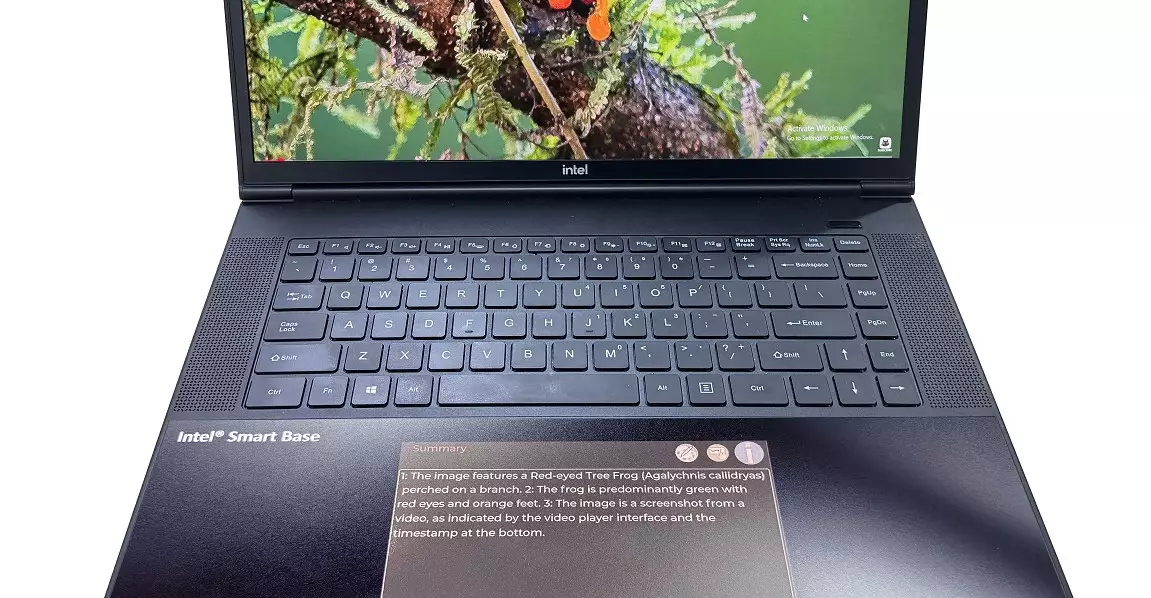In the rapidly evolving realm of personal technology, innovation often lurks in the most unexpected corners. The introduction of E Ink’s groundbreaking low-power touchpad technology promises to redefine how we interact with our laptops. Unlike conventional touchscreens or secondary displays, E Ink’s approach signifies a shift toward combining minimalistic power consumption with practical functionality. This development doesn’t merely add a feature; it challenges the core idea of how ancillary device components should serve the modern user’s needs.
What excites me most about this innovation is its potential to dramatically extend battery life while offering seamless access to dynamic information. For years, power-hungry LCD and OLED components have dictated the limitations of portable devices, often forcing users to choose between enhanced functionality and longevity. E Ink’s technology, renowned for its energy efficiency in e-readers, offers a compelling solution: a dedicated, constantly readable second screen that only consumes power when updating content. This could be a game-changer—not just for tech enthusiasts but for everyday users seeking more reliable, less intrusive devices.
Reshaping the User Experience with Focused Interaction
One of the most insightful aspects of this development is its targeted application for AI integration. Instead of cluttering the main workspace with additional windows and tabs, consumers could have instant access to AI-driven insights, summaries, or even conversational assistants in a dedicated space. Imagine working on a complex report, with a live, color display quietly presenting the latest data analysis or insightful summaries—without interrupting your flow or draining your battery. This personalized and contextually relevant interface aligns well with the increasing reliance on AI-enabled personal assistants.
Furthermore, this dedicated touchpad doubles as a customizable interface for shortcuts, notifications, or media controls. Much like the discontinued Apple Touch Bar but improved through the power efficiency of E Ink, such a display would streamline workflows while eliminating unnecessary distractions. Its ability to show quick, glanceable information without the need for full-screen applications invites a simpler, more focused user interaction.
Challenges and Opportunities in Adoption
While the concept is compelling, the technological and logistical hurdles are not insignificant. For one, the current limitations of E Ink displays—primarily their focus on text and limited refresh rates—pose questions about how effectively they can handle more dynamic content and color imagery. Although colorful signage and digital note-taking suggest growing versatility, the resolution and responsiveness required for detailed AI communication could be a sticking point.
Another concern is the potential trade-off between utility and distraction. A vibrant, multi-colored interface directly under your fingers might tempt users to check notifications or chatbots too frequently, possibly distracting from focused work. Additionally, the integration process—whether this touchpad would operate independently as an embedded component or rely on the laptop’s OS—remains an open question. A seamless, intuitive implementation is crucial for widespread adoption.
Yet, despite these challenges, the opportunity to significantly improve battery efficiency puts this technology on a promising trajectory. As AI applications become more prevalent and resource-intensive, minimizing power drain without compromising access to vital information will be crucial. E Ink’s proven track record in low-power displays suggests that this innovation has the potential to become a staple in future laptops, especially for power-conscious professionals and students.
Prognosis for the Future
If the industry embraces this advancement, we might soon witness a fundamental shift in laptop design philosophy—favoring minimalist, purpose-built interfaces that prioritize efficiency over dazzling displays. It’s not just about adding another screen; it’s about redefining how we interact with our devices in a way that aligns with our increasingly mobile and AI-driven lifestyles.
While exact timelines and partnerships remain cloaked in secrecy, the promise is undeniable. E Ink’s technology could catalyze a new wave of lightweight, long-lasting laptops, perfect for users who demand both performance and endurance. As we venture further into an era dominated by AI and digital assistants, the humble touchpad might evolve into a smart, communicative hub—quietly transforming the way we work, communicate, and stay informed.

